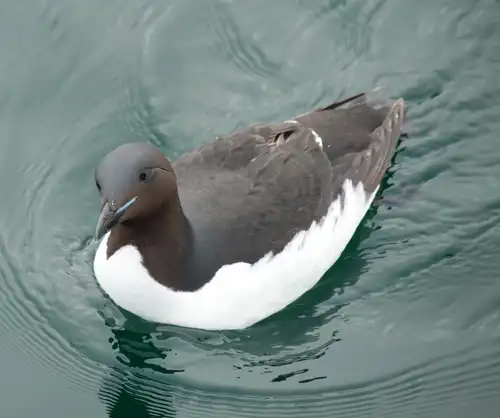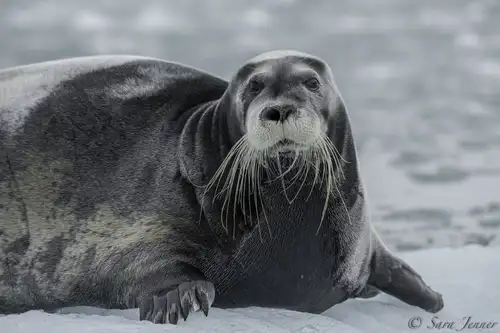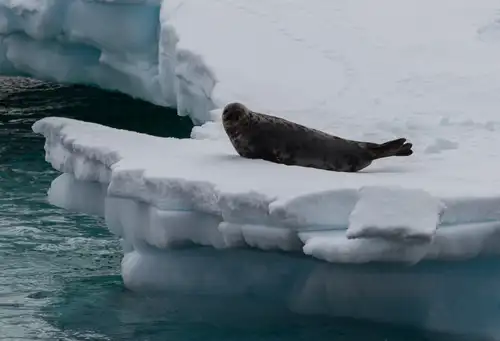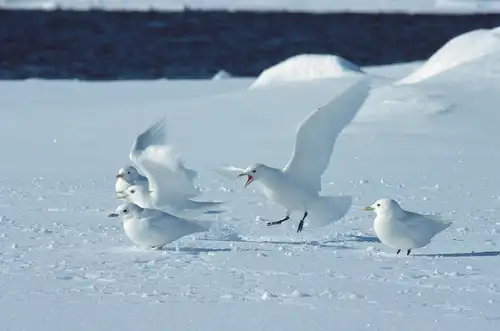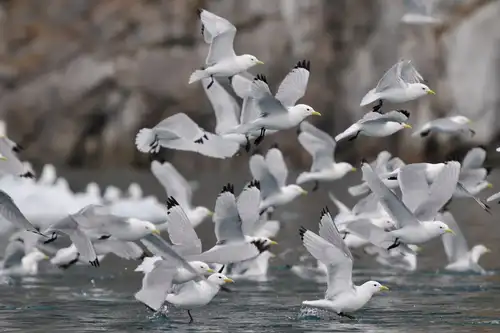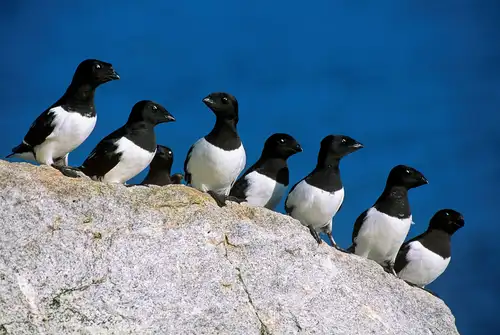








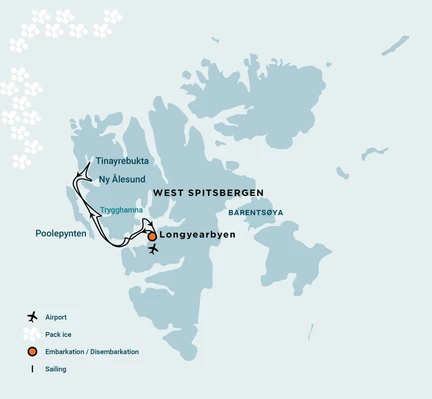


















 8 Days/7 Nights
8 Days/7 Nights




You arrive by chartered plane from Keflavik and land at Constable Pynt, the airfield at the head of Hurry Inlet. This area is known for its rich geological history.
Sailing among the glaciers
Enjoy the sights as we sail the glaciated Volquart Boons Coast. You may set out on a Zodiac cruise along one of the shoreline glacier fronts, with your first activity near Månegletcher or Vikingebugt.
Inuit neighborhood of yesteryear
We sail by the east coast of Milne Land among giant icebergs. If possible, we will land at Charcot Havn, walk to the Charcot Glacier, then continue by the Bjørneør and sail to Øfjord.
Mountain-fringed fjord & colossal icebergs
We visit the east entrance of Ø Fjord, one of the most impressive fjords in the world. The fjord is almost 40 nautical miles long, with mountains up to 2,000 meters high and icebergs over depths of more than 1,000 meters. We aim to land at Jyttehavn and hike the tundra. We may also sail into Harefjord, Rypefjord, and Rödefjord, walking into C. Hoffmanhalvöya and on Storö. Near Sydkap, you can see colossal icebergs, some over 100 meters high and more than a kilometer long. At Sakatajik, view the remains of Thule winter houses. If the sky is clear, you might see the aurora borealis.
The tundra of Jameson Land
On the western shores of Jameson Land lies a vast tundra with grazing musk oxen. We will try to land on one of the areas, such as Tyskit Nunat, remembering Alfred Wegener’s efforts to cross Vandreblokken. We may also visit Kap Hooker or a lagoon west of Kap Stewart.
Settlement at Scoresbysund
Today’s stop is Ittoqqortoormiit, the largest settlement in Scoresbysund with about five hundred inhabitants. At the post office, you can buy stamps for your postcards or just stroll around to see the sled dogs and drying skins of seals and musk oxen.
The hikes of Hurry Inlet
In the morning, stop on the south coast of Jameson Land, at a lagoon near Kap Stewart. Here, waders and geese gather for their autumn migration, and musk oxen and collared lemmings survive on the meager vegetation. Further inside Hurry Inlet, you may walk near the head of the fjord and one of the rivers. There is a chance to climb J.P. Koch Fjeld, near Hareelv. Scientists found fossils here linking fish and amphibians from the lower Cretaceous period. Spend the night at anchor off Constable Pynt.
Final call at Constable Pynt
We take the chartered plane from Constable Pynt to Keflavik, taking home memories for a lifetime.














s/v Remvrandt van Rijin
Our three-mast schooner, Rembrandt van Rijn, is ideally suited for expedition cruising among the fjords of Greenland and Spitsbergen.
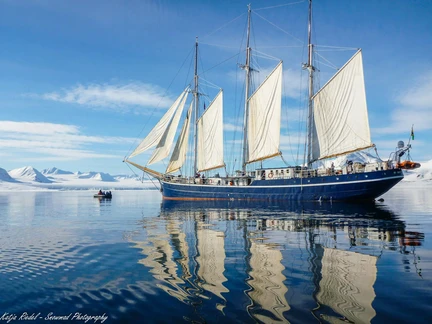
Specifications
| Passengers: | 33 in 16 cabins |
| Staff & crew: | Crew 10 | Guides 2 |
| Length: | 49,50 meters |
| Breadth: | 6,65 meters (22,9 ft) |
| Draft: | 2,8 meters (8 ft) |
| Ice class: | Suitable to sail in the Svalbard and Greenlandic waters. |
| Displacement: | 435 tonnes |
| Propulsion: | 2 cummins engines together 550 KW |
| Speed: | 6,5 knots average cruising speed |
Cabins Gallery


Ship Interior Gallery


Ship Exterior Gallery


S/V Rembrandt Van Rijn was originally built as a herring lugger in 1947. The vessel was then rebuilt as a three-mast passenger sailing schooner in he Netherlands in 1994, sailing in Spitsbergen (1994 – 1996) and the Galápagos (1998 - 2001). The vessel later underwent a complete rebuilding and refurbishment program until 2011. The communication and navigation equipment has been completely renewed according to the latest SOLAS regulations.
Perfect for expedition cruising among small islands
The ship is well suited for expedition cruising among small islands and offer good open deck viewing areas, also when under sail. The two inflatable rubber crafts (Zodiacs) enable landing and wildlife viewing opportunities in otherwise inaccessible areas.
Comfort and Character
Rembrandt van Rijn measures 49,50 meters in length, 7 meters in width, and has a draft of 2,8 meters. The average cruising speed on engines is 6,5 knots. It has an experienced crew of 12 persons on board including 2 tour guides. The ship can accommodate a maximum of 33 passengers in 16 cabins. It has one Triple Private cabin (with shower and toilet and porthole), six Twin Private Inside cabins (with shower and toilet, no porthole), and nine Twin Private cabins (with shower and toilet and porthole).
Age range & Nationality onboard
Passengers on a typical voyage range from their 30s to their 80s - with a majority usually from 45 - 65, but a little younger on the Rembrandt van Rijn, between 30 - 55. Our expeditions attract independent-minded travellers from around the world. They are characterised by a strong interest in exploring remote regions. The camaraderie and spirit that develops aboard is an important part of the expedition experience. Many departures have several nationalities on board.
Catering
Three simple but good meals of international cuisine per day are served buffet style in the restaurant and is prepared by our cook.
Dress code
In keeping with our expeditions atmosphere, dress on board is informal. Bring casual and comfortable clothing for all activities. Keep in mind that much of the spectacular scenery can be appreciated from the deck, which can be slippery. Bring sturdy shoes with no-slip soles and make sure the parka is never far away in case of the call "Whales!" comes over the loudspeaker and you have to dash outside. Wear layers since it is comfortably warm aboard the ship - and often cold on deck.
Electric Current
The electrical supply aboard the ship is 220 volt 50hz. Electrical outlets are standard European with two thick round pins. U.S. passengers may need a 220v/110v converter.
Excursions & Landings
Every day there will be excursions on land, weather and ice permitting. The landings will take three to six hours per day over untracked areas. According to circumstances (the weather, the ice situation or the passengers´ wishes) the program can sometimes be adjusted. Ample time will be devoted to wildlife, vegetation, geography, and history.
Gratuities
The customary gratuity to the ship's crew and expedition leader is made as a blanket contribution at the end of the voyage. Tipping is a very personal matter and the amount you wish to give is at your discretion. We suggest to give cash in Euros, US Dollars or Danish kroner.
Non-smoking policy
On board our vessels we have a non-smoking policy. It is prohibited to smoke inside the ship. You can smoke in designated ares. Please respect the wishes of non-smokers.
The crew
The crew of the ´Rembrandt van Rijn´ consists of 9 experienced crew and 2 expedition guides and a cook. The sailors are in charge during sailing and will bring us ashore.
Your physical condition
You must be in good general health and you should be able to walk several hours per day. The expedition is ship-based and physically not very demanding. Although we spend as much time as possible ashore, you are welcome to remain aboard the ship if you like. To join most excursions, you must be able to get up and down the ladder from the ship to the water level to board the Zodiacs. Staff will assist you in and out of the boats. This will become progressively easier with practice. Ashore it can be slippery and rocky. You are travelling in remote areas without access to sophisticated medical facilities, so you must not join this expedition if you have a life-threatening condition, or need daily medical treatment.
- Our sailing vessel is much smaller compared to our motor-vessels. The maximum number of passengers is 33 on s/v Rembrandt van Rijn. The atmosphere on board is very intimate and there is more direct contact with the sailing crew. The number of guides on board is also lower, on Rembrandt van Rijn there are two staff members who will lead shore and Zodiac activities. Rembrandt's sailing speed is slower compared to our motor vessels so the distances covered will also be different. With Rembrandt being smaller though this opens more possibilities for activity sites as she can access more areas, because of this there is a greater amount of flexibility with the sailing itineraries.
- The currency on board our vessels is the Euro, but it is also possible to pay with USD on board.
- Aboard Hondius, Ortelius, Plancius, and Rembrandt van Rijn, refreshments and souvenirs will be charged to your cabin. The day before disembarking, you can settle your bill with the hotel manager and pay by Visa or MasterCard, Diners Club/Discover, Union Pay, or cash (Euro or USD). The prices and standard currency on board all of our vessels is the Euro.
- When you make a confirmed reservation, we require a 40% deposit. But if the reservation is made within two months prior to departure, the full price of the voyage is due at the time of booking.
- This depends on what you want to experience at Spitsbergen. In case you want to experience the Polar night or the Aurora Borealis, November to February is the best time to travel to Spitsbergen. Do you want to see the midnight sun and enjoy boat trips, kayaking or hiking? Then the best time to visit Spitsbergen is around May until September. This is the summer period of Spitsbergen.
- The sun sets for the last time in Spitsbergen in mid-September and rises above the horizon again in mid-February. The winter landscape and temperatures prevail until May.
- Sailing depends on wind, ice conditions, and the itinerary. When these conditions are right, our sailing ship will usually attempt to sail. In case the wind is not favorable, ship engines will be used. On each voyage, several sailing attempts will be made.
- The sailing vessel Rembrandt van Rijn was originally built as a herring lugger in 1947, then rebuilt in the Netherlands in 1994.
You May Also Like



Alpine Peaks of Spitsbergen, Ski & Sail
 8 Days / 7 Nights
8 Days / 7 Nights

Arctic Ocean - Fair Isle, Jan Mayen, Ice Edge, Spitsbergen, Birding
 10 Days / 9 Nights
10 Days / 9 Nights
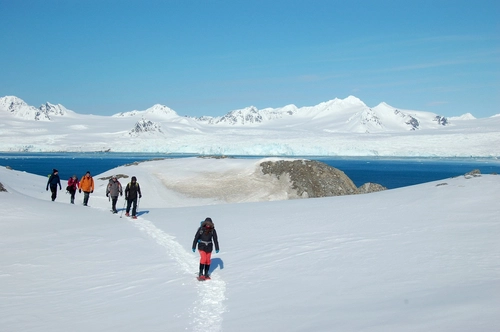
North Spitsbergen - Arctic Spring , Hike & Sail
 8 Days / 7 Nights
8 Days / 7 Nights

North Spitsbergen Explorer - Into the pack ice - Polar Bear Special
 8 Days / 7 Nights
8 Days / 7 Nights

Arctic Ocean - Jan Mayen, Ice edge, Spitsbergen, Birding
 9 Days / 8 Nights
9 Days / 8 Nights

Arctic Ocean - Fair Isle, Jan Mayen, Ice edge, Spitsbergen, Birding - Summer Solstice
 10 Days / 9 Nights
10 Days / 9 Nights

North Spitsbergen Explorer - Versatile landscapes, sea ice & wildlife
 8 Days / 7 Nights
8 Days / 7 Nights

North Spitsbergen Basecamp – Summer Solstice - Free Kayaking, Hiking, Photo Workshop, Diving (supplemented)
 8 Days / 7 Nights
8 Days / 7 Nights

North Spitsbergen Explorer - Versatile landscapes, sea ice & wildlife - Summer Solstice
 8 Days / 7 Nights
8 Days / 7 Nights

North Spitsbergen - Arctic Summer
 11 Days / 10 Nights
11 Days / 10 Nights

East Spitsbergen - Home of the Polar Bear, Including Long Hikes & Cleaning the Shores
 8 Days / 7 Nights
8 Days / 7 Nights

Around Spitsbergen, In the realm of Polar Bear & Ice
 10 Days / 9 Nights
10 Days / 9 Nights

North Spitsbergen Explorer – Into the Pack Ice – Polar Bear & Whale Special
 10 Days / 9 Nights
10 Days / 9 Nights

Northeast Greenland Solar Eclipse Explorer Voyage
 14 Days / 13 Nights
14 Days / 13 Nights

Spitsbergen - Northeast Greenland, Fly & Sail
 20 Days / 19 Nights
20 Days / 19 Nights

Around Spitsbergen incl. Nordaustlandet
 10 Days / 9 Nights
10 Days / 9 Nights

Alpine Peaks of Spitsbergen - Ski & Sail
 8 Days / 7 Nights
8 Days / 7 Nights

Arctic Ocean - Fair Isle, Jan Mayen, Ice Edge, Spitsbergen, Birding Special
 10 Days / 9 Nights
10 Days / 9 Nights

North Spitsbergen Explorer - Versatile Landscapes, Sea Ice & Wildlife
 8 Days / 7 Nights
8 Days / 7 Nights

North Spitsbergen Explorer - Into the Pack Ice - Polar Bear Special
 8 Days / 7 Nights
8 Days / 7 Nights

North Spitsbergen, Arctic Summer - Summer Solstice
 11 Days / 10 Nights
11 Days / 10 Nights

North Spitsbergen Explorer - Versatile Landscapes, Sea Ice & Wildlife - Summer Solstice
 8 Days / 7 Nights
8 Days / 7 Nights

North Spitsbergen Explorer - Into the Pack Ice - Polar Bear Special - Summer Solstice
 8 Days / 7 Nights
8 Days / 7 Nights

Arctic Ocean - Spitsbergen: Jan Mayen, Ice Edge & Birding - Summer Solstice
 9 Days / 8 Nights
9 Days / 8 Nights

North Spitsbergen Basecamp - Free kayaking, Hiking, Photo Workshop
 8 Days / 7 Nights
8 Days / 7 Nights

North Spitsbergen, Arctic Summer
 11 Days / 10 Nights
11 Days / 10 Nights

Around Spitsbergen, in the Icy Realm of the Polar Bear
 10 Days / 9 Nights
10 Days / 9 Nights

A Taste of North Spitsbergen - Compact Arctic Adventure
 6 Days / 5 Nights
6 Days / 5 Nights

South Spitsbergen Explorer - Bear Island - Diving (supplemented)
 10 Days / 9 Nights
10 Days / 9 Nights

Around Spitsbergen - Arctic Summer
 15 Days / 14 Nights
15 Days / 14 Nights

Around Spitsbergen and Nordaustlandet, In the Icy Realm of the Polar Bear
 10 Days / 9 Nights
10 Days / 9 Nights

Spitsbergen, Northeast Greenland & Scoresby Sund, Including Long Hikes
 14 Days / 13 Nights
14 Days / 13 Nights

South Spitsbergen, Bear Island & Mainland Norway - Aurora Borealis
 6 Days / 5 Nights
6 Days / 5 Nights

Arctic on Foot: Hiking and Snowshoeing the Far North

Where the Polar Bears Roam

The Ice-Jewelled Geology of Spitsbergen
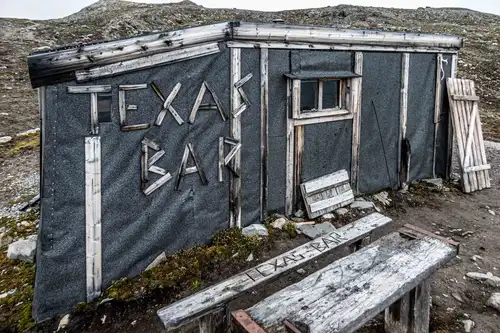
Svalbard’s Texas Bar

Six Must-See Svalbard Sites

Around Spitsbergen vs. North Spitsbergen

Amphibian, reptiles and herbivore mammals in the Arctic

The polar bear: king of the Arctic food chain

Birding Opportunities Abound in Spitsbergen

Polar Bear Sets Impressive New Diving Record

Polar bear feast

“The polar bear will still be there”

Navigating by touch through the sea ice

Eight Engaging Reindeer Facts
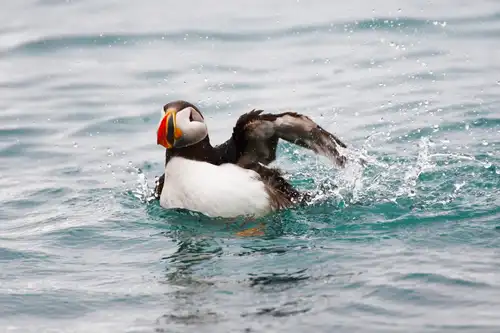
Puffins: Clown Birds of the Atlantic

The Pack Ice and Polar Bears of North Spitsbergen

Spitsbergen: Alkefjellet magic

Polar Bear Primer: Eight Facts About the Arctic Wanderer

What’s so Special about East Spitsbergen?









































